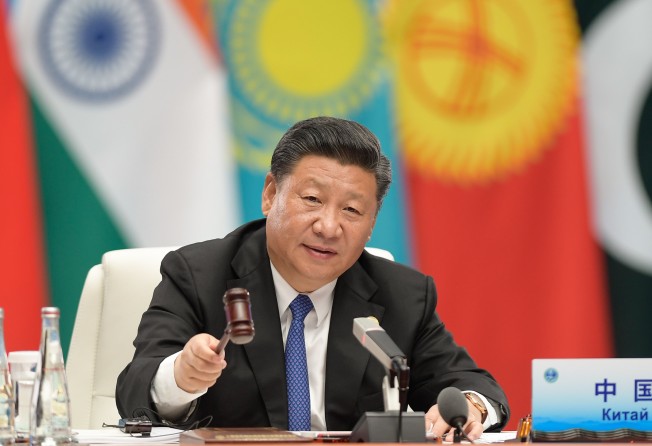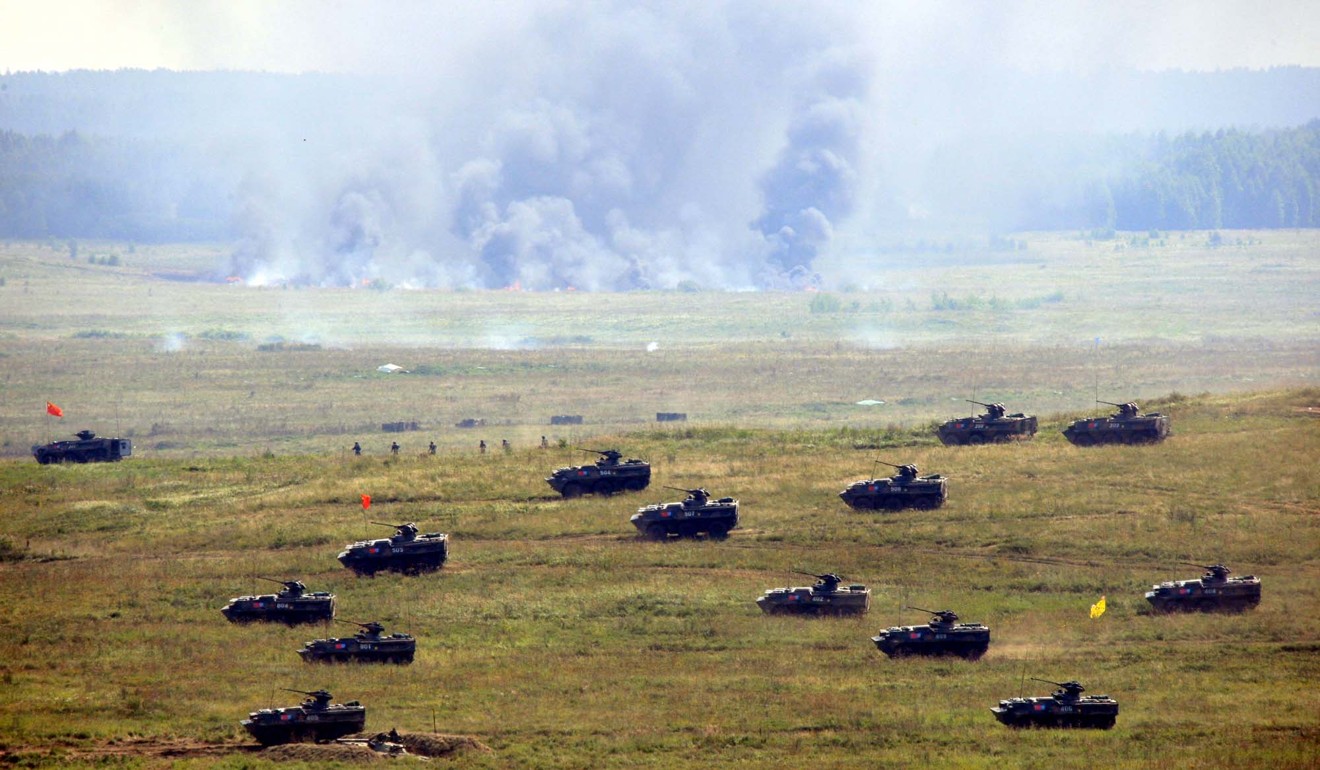
Xi Jinping’s global vision comes together at security summit in China as America’s comes apart at the G7
Michael Clarke says the orderly Shanghai Cooperation Organisation meeting was a stark contrast to the dysfunctional G7, indicating that China’s vision – defined by its Belt and Road Initiative and ‘community of common destiny’ – is taking shape

As US President Donald Trump continued to upset long-standing allies at the G7 summit in Quebec, Chinese President Xi Jinping was busy consolidating the Shanghai Cooperation Organisation (SCO) at its 18th summit in Qingdao.
The SCO – since 2017 comprised of China, Russia, Kazakhstan, Tajikistan, Kyrgyzstan, Uzbekistan, Pakistan and India – has in the past been dismissed by Western observers as either an ineffectual “talk shop” or a prospective “axis of authoritarians”. Such characterisations are wrong and it is time for the West to start to take the challenge posed by the SCO and its core driver, China, seriously.
This task is all the more urgent as Trump’s “America first” foreign policy is translating in practice into “America alone”. According to a White House official recently quoted by Jeffery Goldberg in The Atlantic, the “Trump doctrine” is animated by the visceral assertion that “We’re America, bitch” and that “The president believes that we’re America, and people can take it or leave it.”
The defining image of the G7 summit – a visibly disinterested Trump listening to German Chancellor Angela Merkel while Japanese Prime Minister Shinzo Abe and French President Emmanuel Macron look on – provided ample illustration of this. The rhetoric also matched the optics, with the president tweeting that the US did not endorse the G7 leaders’ statement committing members to “reduce tariff barriers, non-tariff barriers and subsidies”.

At Qingdao, in contrast, Xi presided over a carefully stage-managed summit of an organisation that now encompasses nearly half of the world’s population and 20 per cent of its GDP. The summit’s “Qingdao Declaration” included clear swipes at the Trump administration, from asserting that the grouping would “oppose fragmentation in world trade relations and any form of trade protectionism” to statements of support for a negotiated settlement to conflict in Afghanistan and the continued implementation of the Iran nuclear deal.
While this may wreak of opportunism to some, it is also consistent with two key elements of Chinese foreign policy under Xi: the rhetoric of constructing a “community of common destiny” and the “Belt and Road Initiative”.
The idea of a “community of common destiny”, first flagged by Xi at the Chinese Communist Party’s “Conference on the Diplomatic Work with Neighbouring Countries” in 2013, was initially framed as a means of assurance to China’s neighbours about the implications of its rise via a renewed emphasis on shared interests and cooperation on a range of issues. Since then, Beijing’s rhetoric has added a crucial addendum to this strategy with the idea now conveying the message that, while “China wishes to maintain the status quo” it “insists that emerging powers including China should be treated as equal to the developed countries in global governance”.
The belt and road, encompassing six “economic corridors” linking the Chinese economy with the major continental and maritime zones of the Eurasian continent and the establishment of supporting multilateral financial institutions such as the Asian Infrastructure Investment Bank and Silk Road Fund, is a practical expression of this desire to simultaneously reassure and revise the international order. What such a revised order may look like is provided by the SCO.
As far as Beijing is concerned, the purpose of the SCO, and its precursor, the “Shanghai Five” dialogue of the mid-1990s, is about the promotion of three core interests: securing its restive province of Xinjiang; management of Sino-Russian relations in Central Asia; and, encouragement of a “multipolar” international system.
When the SCO was established in June 2001, it was the first of these objectives that was the top priority, with the group’s founding document declaring its core business aim was combating what Beijing termed the “three evil forces” of “terrorism, extremism and separatism”.

Over the past decade, however, the second and third objectives have arguably risen in importance for Beijing.
China’s increasing economic and strategic weight in Central Asia, a key zone of Russia’s post-Soviet “near abroad”, has been seen as likely to bring latent tension between the two to the fore. However, as Alexander Gubaev, of the Carnegie Moscow Center notes, “Russian and Chinese national interests tend to coincide precisely in areas where they oppose those of the West”.
This dynamic has been most clearly displayed in the SCO where Moscow has acceded to China’s Xinjiang-centric efforts to enhance the organisation’s “anti-terror” cooperation via regular “anti-terror” exercises by SCO militaries, intelligence sharing and closer police and law enforcement cooperation. Beijing, for its part, has echoed Russian opposition to so-called “colour revolutions” in the post-Soviet space and refrained from overt criticism of Russian military interventions in Georgia, Ukraine, the Crimean peninsula and Syria.
Watch: Xi, Putin meet as US tensions bring them closer
The SCO, Simon Fraser University’s Nicole Jackson has argued, amounts to a “statist multilateralism” that prioritises “sovereignty, the protection of state borders and regime security” – an agenda that until the advent of the Trump administration stood in contrast to the broad pillars of post-1945 American foreign policy.
When we contrast the chaos of the G7 summit with the smooth and carefully managed SCO summit, it is clear that order – and what we mean by order – is shifting rapidly. Trump’s abdication of American leadership is giving Xi an unexpectedly early opportunity to take China’s alternative vision global.
Dr Michael Clarke is associate professor at the National Security College, Australian National University. He is the author of Xinjiang and China’s Rise in Central Asia: A History and editor of Terrorism and Counter-Terrorism in China: Domestic and Foreign Policy Implications